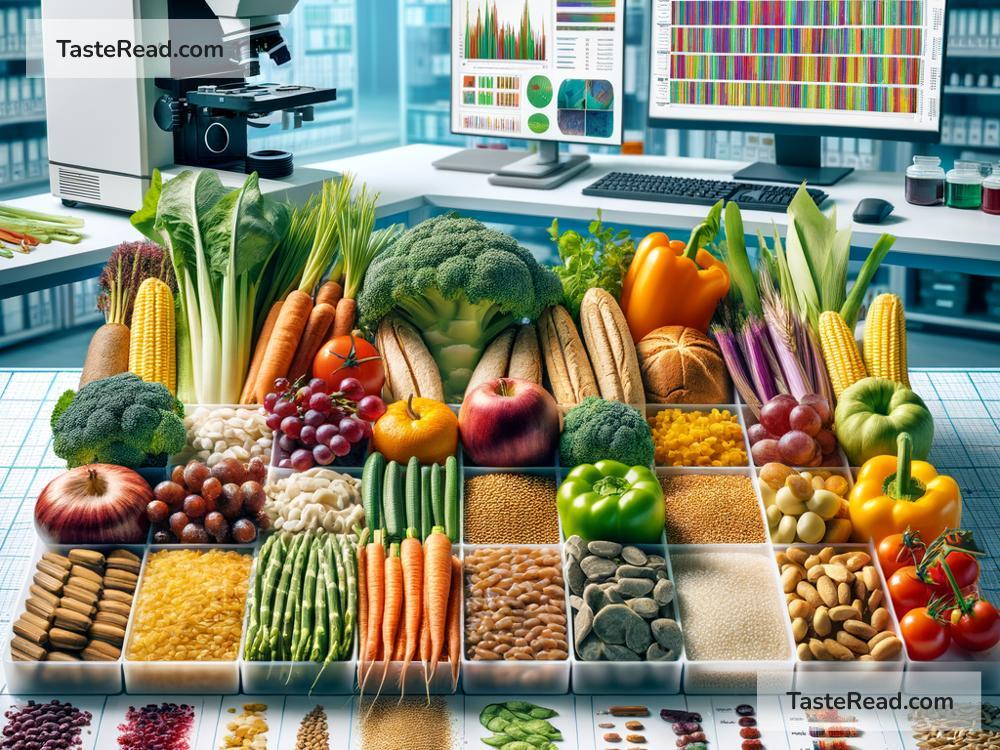The Impact of Food Genomics on Nutrition
In recent years, science has taken some fascinating steps forward, especially in the world of food and health. One of the most exciting developments is food genomics—a relatively new field that’s changing the way we think about nutrition. But what does food genomics mean? And how is it influencing the food we eat and our overall health? Let’s dive into how this groundbreaking area of research is reshaping nutrition, all explained in simple terms.
What Is Food Genomics?
Food genomics is the study of how the genetic makeup of food and humans interact. It combines genetics, nutrition, and biology to understand what happens when you eat certain foods and how your body responds to them. Every plant, animal, and even microorganism has a set of genes that determines its traits, like how it grows, what nutrients it provides, and how it resists disease. Similarly, humans also have unique genetic codes that influence how our bodies process food, absorb nutrients, and handle health risks.
By examining the relationship between food and genes, scientists can explore questions like: Why do some people thrive on certain diets while others struggle? Why can one person eat dairy without any issues, but another develops lactose intolerance? Food genomics seeks to answer these questions and create personalized solutions to improve nutrition and health.
How Food Genomics Is Revolutionizing Nutrition
- Personalized Nutrition
One of the biggest impacts of food genomics is the idea of personalized nutrition. Scientists can use information about your DNA (your genetic code) to recommend diets that are tailored specifically for you. For example, a person whose body struggles to metabolize fats might benefit from a low-fat diet, while someone whose genes show they’re prone to inflammation might need more Omega-3-rich foods like fish and walnuts.
With personalized nutrition, gone are the days of one-size-fits-all diets. Instead, food genomics is paving the way for diets designed to match your unique genetic profile, maximizing the benefits of every meal.
- Improved Food Quality
Food genomics is also helping improve the quality of the foods we grow. Farmers, scientists, and agricultural specialists are studying the genetic information of crops and livestock to make them healthier, more nutritious, and resistant to diseases.
For example, scientists can use genomics to develop wheat that’s richer in vitamins or rice that contains more iron. They can create strawberries that are naturally sweeter or tomatoes that ripen slower to reduce food waste. Through this process, we’re seeing smarter farming and better food on our plates.
- Understanding Health Risks
Some diseases, like diabetes, heart disease, and cancer, are influenced by both diet and genetics. Food genomics helps scientists understand how certain genes increase the risks of these conditions and how specific foods can reduce those risks.
For example, if research reveals someone has a genetic tendency toward high cholesterol, they could be advised to avoid saturated fats. Similarly, genes linked to inflammation may call for a diet rich in anti-inflammatory foods like olive oil and leafy greens.
Benefits of Food Genomics
Food genomics has the potential to make everyone healthier. Here are some key benefits it offers:
-
Better Disease Prevention: By understanding your genetic vulnerabilities and tailoring your diet, doctors can help you prevent conditions like obesity, diabetes, and heart disease before they begin.
-
Smarter Food Choices: Manufacturers can create functional foods—products enhanced with nutrients or benefits specifically targeted to meet individual genetic needs. Think of foods fortified with vitamins or probiotics tailored to your DNA.
-
Environmental sustainability: Food genomics can help farmers grow crops that need less water, resist pests naturally, and adapt better to climate changes, benefiting the environment.
Challenges of Food Genomics
While food genomics is exciting, it’s not perfect yet. There are a few challenges to consider:
-
Cost
Personalized nutrition based on your DNA can be expensive. Getting genetic tests and working with nutrition experts isn’t affordable for everyone yet, so access might be limited. -
Complexity
Human bodies are complicated! A person’s health doesn’t depend only on their genes. Lifestyle, environment, and even mental health also play big roles. Food genomics must work alongside these factors to create effective solutions. -
Ethical Concerns
With genetic testing, privacy and security concerns arise. People worry their DNA information could be misused, and proper safeguards must be in place to protect their data.
The Future of Food Genomics
The research behind food genomics is still growing, but the future looks bright. As technology advances, DNA-based diets are becoming more affordable and accessible. Scientists will continue uncovering ways to optimize health and nutrition for everyone, from improving immunity to treating chronic illnesses with a customized approach to food.
Food genomics could also help solve large-scale problems, like global malnutrition. By tweaking the genetic makeup of staple foods like rice and wheat, researchers can bring nutrient-rich crops to areas that lack food security. This innovation has the potential to dramatically improve lives around the world.
Conclusion
Food genomics is transforming the way we think about what we eat. By studying the interaction between genes and food, scientists can revolutionize nutrition with personalized diets, smarter crops, and better disease prevention. While there are still hurdles to overcome, the future is promising. Whether it’s your daily meal or the food supply of entire nations, food genomics is creating healthier outcomes for us—and for generations to come.


